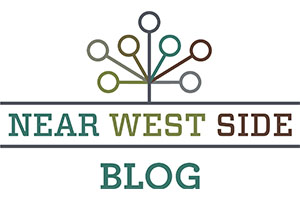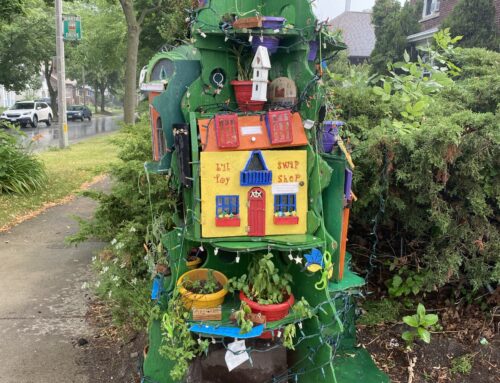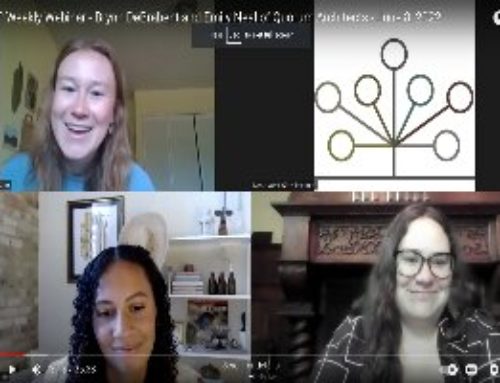Claire Stanley, NWSP Intern
Using Cameras to Monitor the Neighborhood
Bobby McQuay said that cameras offer a way to “see what’s really going on and who’s really working with us.” Installing cameras addresses activities such as loitering, accidents, and open-air drug deals through a network of residents, business owners, and the Milwaukee Police Department (MPD). Bobby reported that most businesses were receptive to the project: “No one didn’t want the cameras present.”
Citizens in communities with cameras felt safer at night. Despite posing threats to personal privacy, CCTV camera operators can train to be more consistent in fixation location and judgments of suspicion than untrained observers. To take a closer look, check out this collection of reports from The Journalist’s Resource.
NWSP also works beyond installation to ensure that cameras are effective and used responsibly. “If a camera is just there, and there’s no one on the other end to monitor or utilize it, what’s the point?” Bobby said. “Continuing to partner with our businesses and MPD is the best way to make this work.”
In Baltimore and Chicago, surveillance cameras reduced rates of crime even beyond camera coverage. Chicago also saved money averting crime by investing in technology and trained staff. To learn more, read this report from the Urban Institute.
Many businesses are faced with decisions regarding types of cameras, their costs, and their effectiveness. On 27th Street, battery-powered motion sensor cameras would be unusable because of the amount of activity that occurs in the area. Businesses should instead invest in direct current (DC) cameras, which can last up to ten days.
“In a heavy traffic area, it would be more advantageous to have a camera that’s constantly recording,” Bobby said. DC cameras can also save money on energy costs.
In a similar way, static cameras (ones that only point in one direction) can be more cost-effective than power zoom cameras. While they may not capture images as well, they can provide more information that will help MPD curtail more crime over time.
MPD is a leader in closed-circuit television (CCTV) monitoring. Their installation of cameras in high-crime, high-traffic intersections have aided criminal investigations and been used to detect incidents in high-crime areas that would’ve otherwise gone unreported. This article by Urban Milwaukee presents the full results of the study.
Four out of the six camera installations have already been completed, and NWSP is in the final stages of getting everything done, Bobby said. The project, which includes a training session, should be done by the end of the month. Business owners are expected to maintain their relationship with MPD in order to help make Lights, Cameras, and Action successful.
“The general idea for a business is to expand their customer base and make money, and some activities really inhibit that from happening. The business owners and managers I’ve spoken with understand that it’s better for businesses to work together,” Bobby said. Detroit’s Project Green Light is an example of how local store owners are encouraged to install cameras that make themselves and their community safer.
When business operators show support and commitment to their community, the perceived success of their business increases, illustrating the relationship between one’s social responsibility and their community’s success. The full report by the Journal of Small Business Management is available here.
Connecting With Neighbors Creates Long-Lasting Change
Kelly O’Neill works alongside MPD’s Community Liasion Officers to make sure people have the chance to get to know her, offer input, or give information on a case.
“The Near West Side is really good at reminding people of the tools that are at their disposal,” Kelly said. Since each neighborhood has a different meeting schedule and structure, it’s important for residents to be aware of NWSP’s broader safety goals.
“People see and experience things differently, so bringing everyone together in the neighborhood can really change the experience and make it more positive and safer,” Kelly explained. For homeowners and renters especially, the program serves as a reminder to be inclusive of other groups. Discussing the location of porch lights or the presence of suspicious vehicles is key to establishing a relationship with community members.
“Getting that community to come together and be comfortable reaching out to each other– knowing people’s cell phone numbers, how to get a hold of them, and their routines– is an awesome thing in a community,” Kelly said.
Kelly centers her work on communication and aims to empower residents by “making them feel like they’ve gotten a real response” from MPD’s officers. She said that if residents can see the results of Lights, Cameras, and Action, they can be assured that “if they need something done, they can get something done.”
Milwaukee’s Office of Violence Prevention is an example of a community-based safety solution woven into the fabric of government, similar to other cities with Offices of Neighborhood Safety. These programs can reduce rates of homicide and gun violence.
“When people get more comfortable with the justice system, the city, and how it works for them, they’re making everyone put their money where their mouth is and do the work they’re supposed to be doing,” Kelly explained. This makes it easier for groups to build long-term goals. The video below is an example of how the Harambee community has worked with MPD to achieve similar goals.
The University of Kansas found that the implementation of community coalitions to combat drug and alcohol abuse led to changes lasting over two years. This included major improvements in community-level indicators such as rates of reckless driving and DUI arrests.
To take action in your neighborhood, connect with NWSP by responding to door hangers and pamphlets. Bobby also encourages residents to attend MPD’s District 3 Crime and Safety meeting, where they can meet the district’s captain, routine officers, and community liaison officers.
“What makes the relationship go is wanting to know who’s involved in your community. Starting in your district at the crime and safety reports is a great way to learn more about community meetings,” he said.
Learn more about Lights, Cameras, and Action and other NWSP safety programs online. If you’re interested in getting involved or talking to Kelly O’Neill, email us at outreach@nearwestsidepartners.org or subscribe to our newsletter.
To view more safety tips provided by the NWSP Ambassadors please watch the video below.





